India is no stranger to some extremely colourful festivals, the most popular being Holi. But there is another really interesting festival in the country of Nepal called the ‘Sindoor Jatra’ that celebrates the Nepali New Year and the coming season of spring.
Held each year in the Balkumari Thimi area of Bhaktapur that is on the outskirts of Nepal, the Sindoor Jatra is just one part of the 10-day major festival of Bisket Jatra.
Where Sindoor Jatra occurs on the 3rd day of Bisket Jatra, the latter happens in not just Bhaktapur but also Dhapasi Thimi, Thoka and other regions in Nepal. Popularly also known as the ‘festival after the death of the serpent’ the event is a big deal in the country with preparations starting almost a month in advance.
Hundreds of people pull a giant chariot that carries God Bhairava’s statue to Khalla Tole and citizens of Kone (lower part) and Thane (upper) part of the town engage in a huge game of tug-of-war.
But let us take a deeper look at the Sindoor Jatra and what all it constitutes:
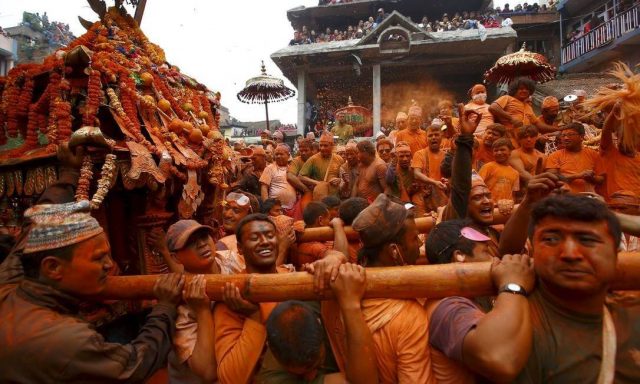
Celebrated each year, the Sindoor Jatra is a way for the citizens to welcome the spring season and the Nepali New Year.

The festival is held on the 3rd day of the main festival of Bisket Jatra.
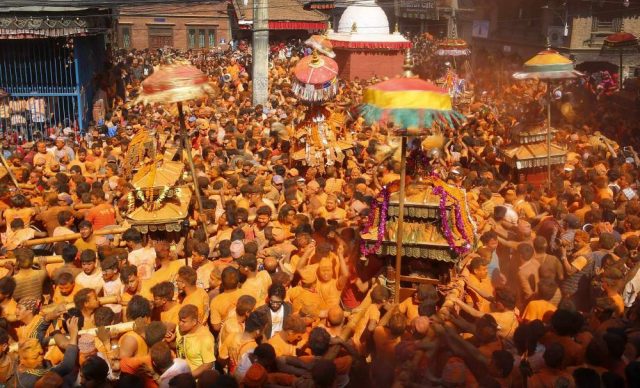
Read More: A Visit To The Paradise On Earth, Remembering Kashmir Through A Picture Story
As per sources, males from Thimi and other areas near Bakhtapur come together and carry out a procession of 30 khats (palanquins) that have images of various gods, the main one having the image of Ganesh.
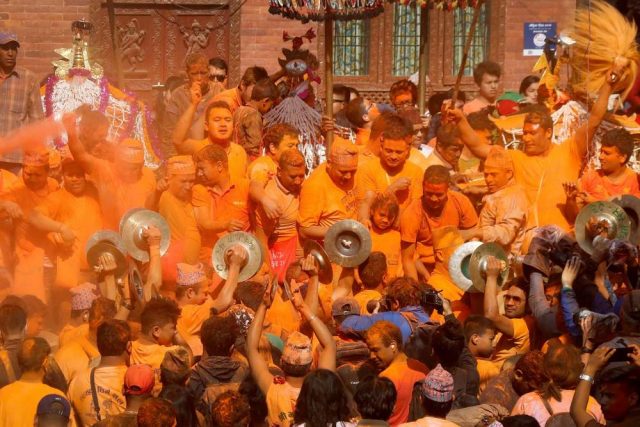
As the procession comes together, sindoor (vermillion) is thrown on them by people standing around until most are covered in the red colour.
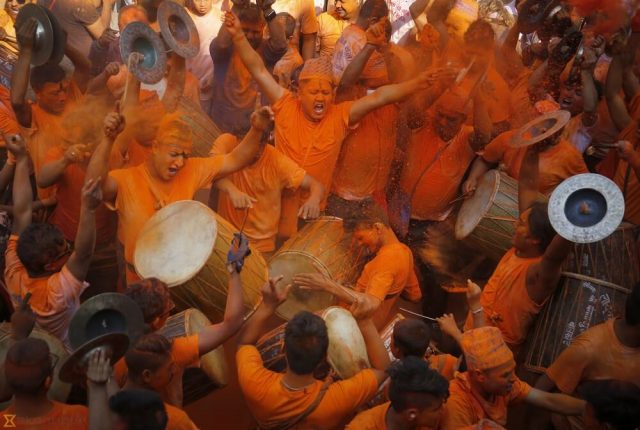
Traditional Nepalese music like Dhimay music and instruments played during the procession fills the air with energy and joyous feeling.
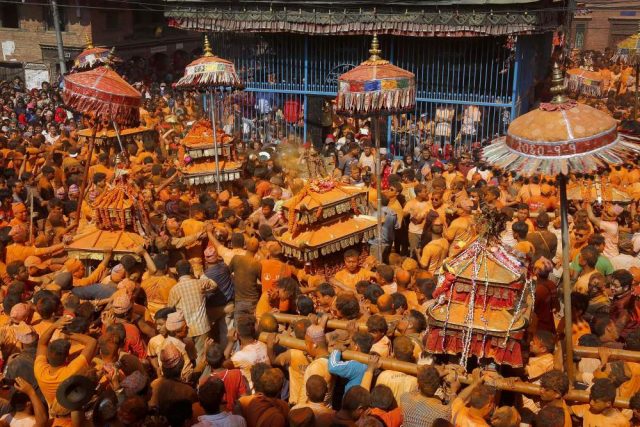
It is said that the festival can get extended if the other khats can catch the one bearing the Ganesh that is held up by hundreds of men.
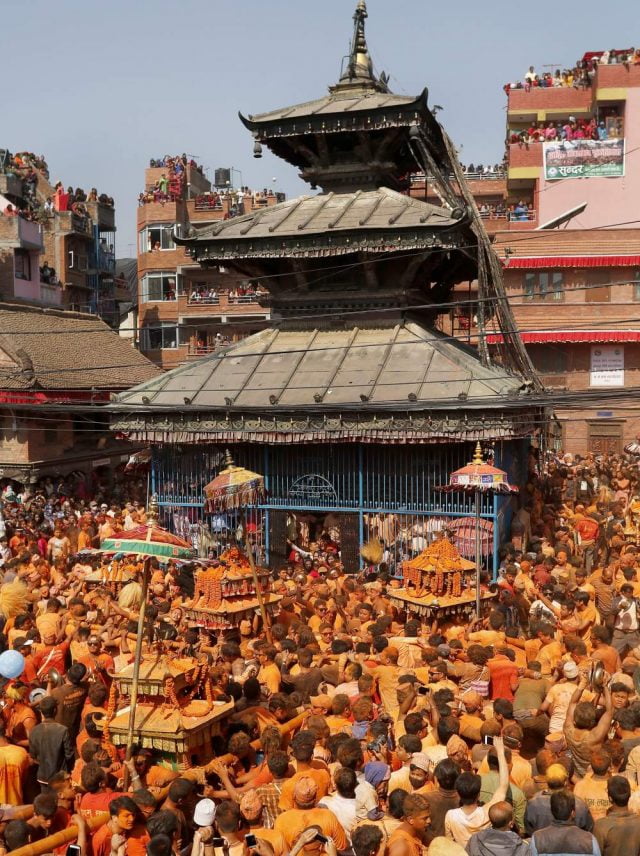
But eventually Ganesh has to go and the festivities move to the Taleju Temple.

The devotees play and enjoy the festival until midday and early evening and then many travel to Bode to see the tongue-boring festival.
The colourful and energetic aspect of the festival has become a major attraction for tourists as it allows a wonderful look at the different parts of Nepalese culture.
The similarities between Holi and Sindoor Jatra are not something we can ignore and just further emphasis on how close the Nepali and Indian cultures are.
Image Credits: Google Images and Reuters
Sources: The Independent, The Tribune, Wikipedia
Other Recommendations:
http://edtimes.in/2017/10/this-transgender-festival-in-south-india-is-the-only-chance-they-get-to-be-married/
































